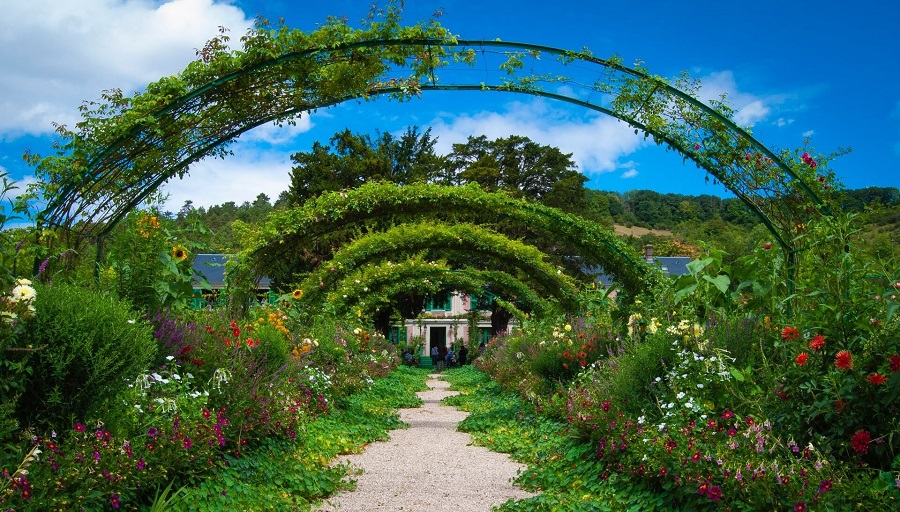Have you always longed for an outdoor space that tantalizes all your senses? Imagine a fragrant pathway leading you through a symphony of colors, textures, and sounds. That is the magic of a sensory garden, a space created to engage your five senses and transport you to a world of wonder and serenity.
Incorporating stimulating features into your home landscape enriches physical and mental wellness. They allow hands-on activities that support fitness and dexterity, reduce stress, promote mindfulness, and boost emotional balance. These elements also create a therapeutic area for children, seniors, and people with disabilities. Ultimately, they make an inclusive space that nurtures well-being, fosters a connection with nature, and improves homeowners’ quality of life.
The best part? You can build a relaxing and immersive environment steps away from your door. Let’s walk through the steps to designing and cultivating your very own sanctuary for the senses.
Sight: A Tapestry of Mesmerizing Colors
Visual appeal is the first noticeable aspect of gardens. Use foliage and blooms with varying shades, shapes, and sizes. Plants with complementary or contrasting colors create vibrant displays, and those that change colors seasonally keep your landscape dynamic year-round. Layer them at different heights for more depth, giving your yard a sense of space and harmony.
Vertical elements, such as climbing vines, trellises, or small trees, and reflective water features, such as ponds, fountains, or waterfalls, add height and dimension. Highlight trees or sculptures with uplights and place low-voltage lighting along paths and around plants for a touch of drama after dark. Create focal points using large planters or décor to guide the eye and provide visual balance.
Smell: A Symphony of Captivating Scents
Aroma is powerful for engaging visitors and improving relaxation. Choose blossoms with alluring fragrances, like gardenia, honeysuckle, jasmine, rose, or lavender. Opt for flowers that bloom at different times of the year so that your garden always has something fragrant. Plant herbs that release scents when handled or brushed against, such as mint, rosemary, and thyme, along walkways or in raised beds. You can also use mulch infused with essential oils or natural wood chips that enhance scents.
Sound: A Melody of Nature
Sound adds life to a garden and enhances its atmosphere. Ornamental grasses, like zebra, fountain, or feather reed grasses, swish softly in the breeze while wind chimes create gentle melodies. The soothing sounds of trickling water from fountains and waterfalls and the lively chatter of warblers in bird baths and feeders create an ambient soundscape. Position your acoustic elements strategically in your yard to create a natural flow and avoid overwhelming the senses.
Touch: A World of Diverse Textures
Tactile elements invite interaction and make your garden more engaging. Use plants that are soft and fuzzy to the touch, such as bunny tail grass, chenille plant, or Lamb’s ear. Incorporate contrasting textures for a unique sensory experience, such as smooth stones and trees with unique barks, like lacebark pine, paperbark maple, or river birch.
Build pathways with materials that offer different sensations underfoot, like stepping stones, gravel, or wood chips. Add interactive textured elements, like sandboxes or sculptures, to make the space more engaging for children and adults.
Taste: An Assortment of Garden Delights
Edible plants make your yard a practical and rewarding space for the whole family. Imagine how convenient it would be to step into your backyard and pick fresh mint for tea or juicy strawberries for an afternoon snack. You can start growing a lush, edible garden with herbs like basil, mint, and thyme in pots or raised beds.
Dedicate patches of land or vertical planters to fruits and vegetables, like blueberries, tomatoes, or grapevines. Also, consider planting dwarf fruit trees for visual appeal and delicious harvest. These edible elements not only provide nourishment but also add a cozy charm to your garden, ensuring beauty and function.
Create a Feast for the Senses
A sensory garden is more than just a collection of pretty plants; it’s an immersive and rewarding outdoor experience that engages all five senses. Craft a tranquil haven that revitalizes your mind, body, and soul by thoughtfully incorporating visual, acoustic, fragrant, tactile, and edible elements. You can start small with a few sensory features or design your home landscape entirely following the tips above. Your sensory sanctuary awaits.

